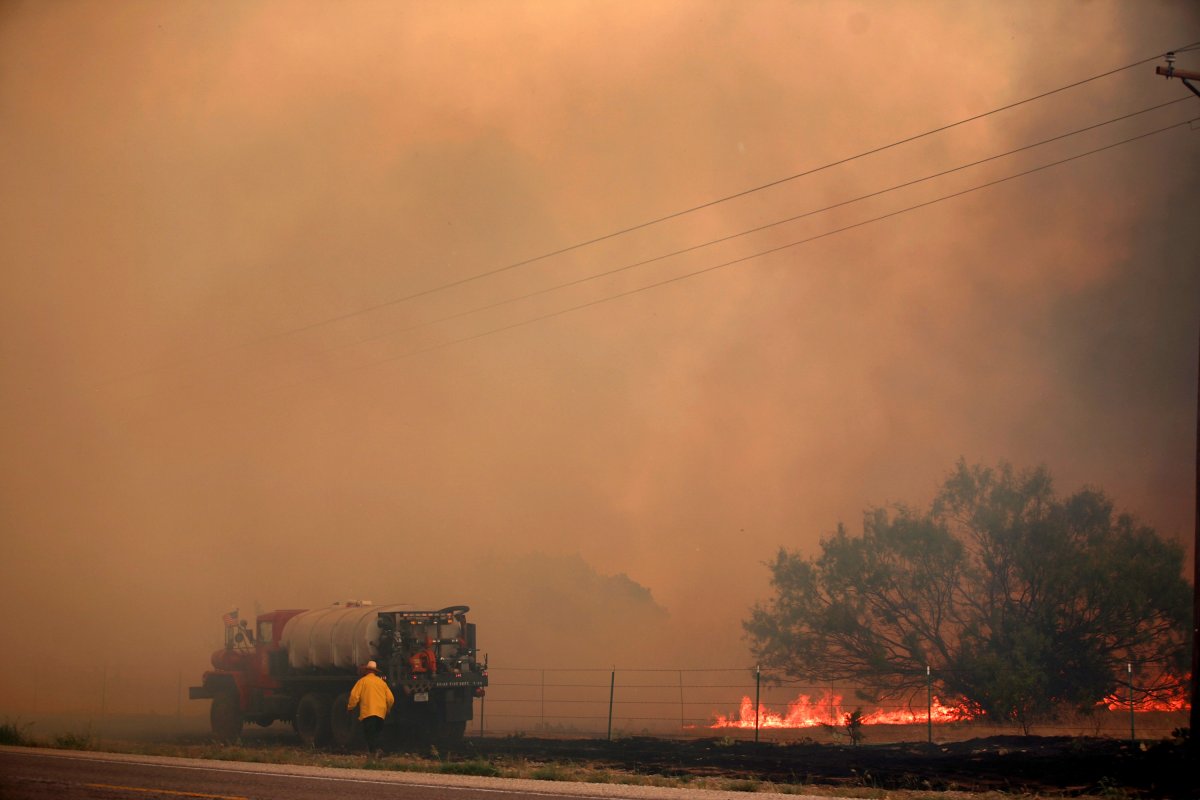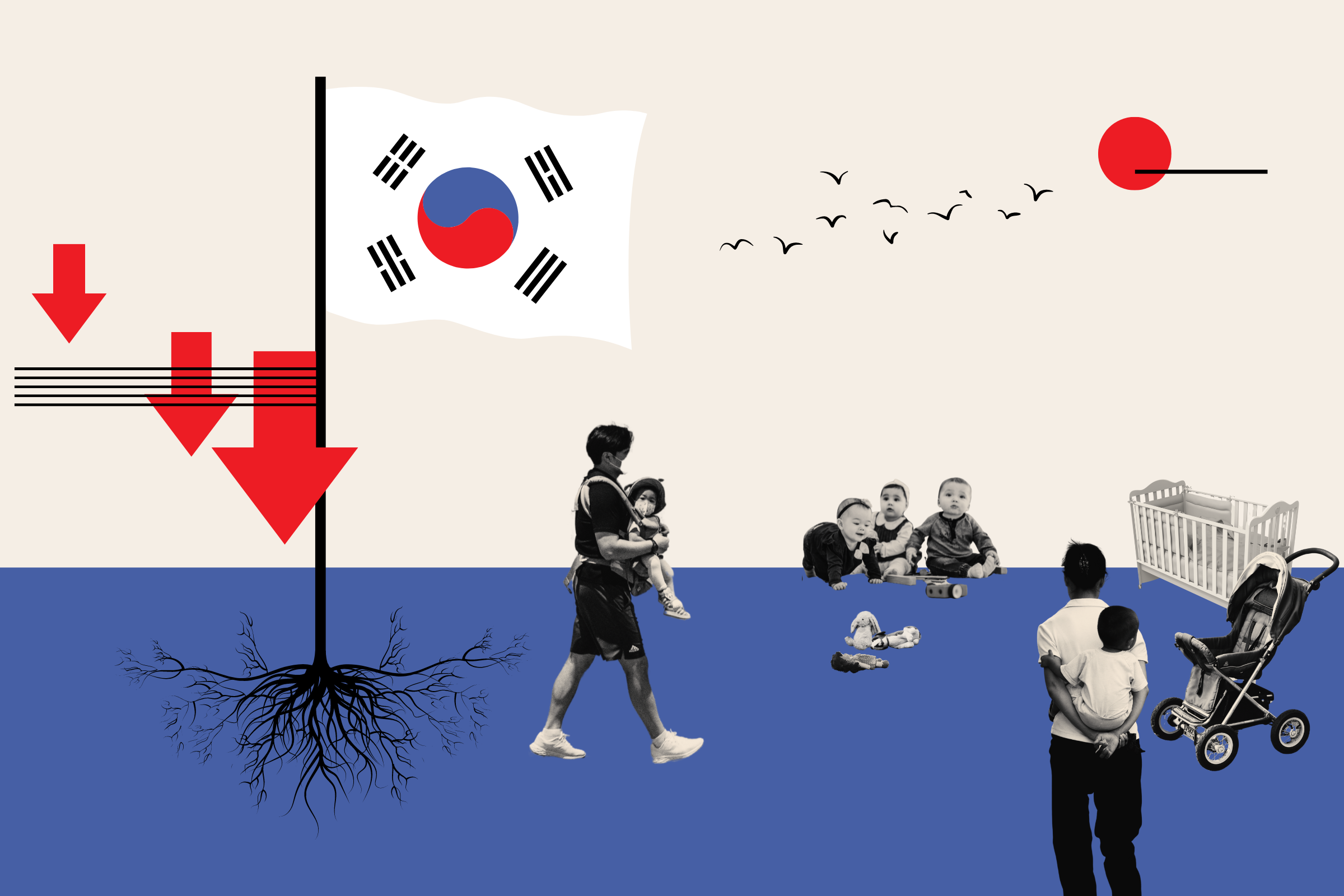Satellite images taken four days apart show severe land scarring as the Texas wildfires continue to rage.
Widespread blazes began on Monday throughout the state, consuming thousands of acres. The Smokehouse Creek Fire, the largest of the wildfires, has since grown to scorch nearly a million acres.
At least one person has been killed, and thousands of animals—mainly livestock—have died as the flames continue to spread. Texas Governor Greg Abbott has since issued a disaster declaration for 60 counties in the state.
It is still unclear what ignited the fires, but the weather has influenced their impact, and on Tuesday, a cold front suddenly shifted the winds and led to erratic fire behavior.

"The Feb. 26-27 2024 wildfire outbreak left a sizable scar across the TX Panhandle," social media user Lexy Elizalde posted on X, formerly Twitter, on Wednesday. "Below is a comparison of satellite imagery from the mornings of Feb. 24th to Feb. 28th. Note the southward finger-scarring that occurred after the cold front passed."
The Feb. 26-27 2024 wildfire outbreak left a sizable scar across the TX Panhandle. Below is a comparison of satellite imagery from the mornings of Feb. 24th to Feb. 28th. Note the southward finger-scarring that occurred after the cold front passed. #txwx #phwx #okwx @NWSAmarillo pic.twitter.com/fZKyPSjEIa
— Lexy Elizalde (@JadeoradeWx) February 28, 2024
The dark gray coloring in the after photo indicates burn scars caused by the fires. Radar loops caught the moment the cold front collided with the wildfires on Tuesday.
"Crazy radar loop showing the cold front blasting through the line of wildfires in the Texas panhandle. Scary stuff. The fires that were burning east, are now a 50 mile southward advancing line," Benjamin Jurkovich posted on X.
Crazy radar loop showing the cold front blasting through the line of wildfires in the Texas panhandle. Scary stuff. The fires that were burning east, are now a 50 mile southward advancing line. pic.twitter.com/z7LwYu3LLG
— Benjamin Jurkovich (@BenJurkovichWX) February 28, 2024
"This Fire Temperature RGB view of the Texas cold front passage that redirected the #SmokehouseCreekFire propagation to a southerly direction is a classic example of how satellite data aids firefighting efforts," NOAA's Cooperative Institute for Meteorological Satellite Studies posted.
This Fire Temperature RGB view of the Texas cold front passage that redirected the #SmokehouseCreekFire propagation to a southerly direction is a classic example of how satellite data aids firefighting efforts. More imagery, details and NGFS tools at https://t.co/ZdUVfNJGnO #TXwx pic.twitter.com/39emwnyJmL
— UW-Madison CIMSS (@UWCIMSS) February 28, 2024
"Wow! The cold front just surged through the Texas Panhandle, switching winds around out of the north. Good news: lower relative humidities, cooler temperatures Bad news: erratic fire spread/movement, and now fires may be spread a bit south Radar shows the smoke," Matthew Cappucci posted.
Wow! The cold front just surged through the Texas Panhandle, switching winds around out of the north.
— Matthew Cappucci (@MatthewCappucci) February 28, 2024
Good news: lower relative humidities, cooler temperatures
Bad news: erratic fire spread/movement, and now fires may be spread a bit south
Radar shows the smoke: pic.twitter.com/kcCzg1apJj
Snow falling in the Panhandle on Thursday benefited firefighters by adding moisture to the air, and National Weather Service (NWS) meteorologist Samuel Scoleri told Newsweek that the added moisture will make it harder for fires to ignite and will assist in keeping the flames from spreading. A rain-and-snow mix was moving throughout the Smokehouse Creek Fire.
"It's a good day to battle those fires and get them contained," Scoleri said.
However, weather conditions this weekend are expected to be dry, hot and windy, which threatens to reignite any remaining fires, Scoleri added.
Uncommon Knowledge
Newsweek is committed to challenging conventional wisdom and finding connections in the search for common ground.
Newsweek is committed to challenging conventional wisdom and finding connections in the search for common ground.
About the writer
Anna Skinner is a Newsweek senior reporter based in Indianapolis. Her focus is reporting on the climate, environment and weather ... Read more
To read how Newsweek uses AI as a newsroom tool, Click here.





